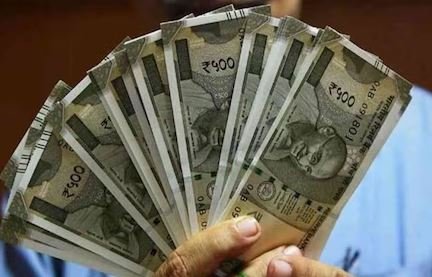India is one of the fastest-growing economies in the world. Along with this growth, many Indians are becoming wealthier. Some now have a net worth of ₹1 crore or more, which includes savings, investments, property, and other valuable assets. But how many people in India are this wealthy? Let’s take a closer look at the numbers and what they mean for the country.

What Does Having a Net Worth of ₹1 Crore Mean?
A net worth of ₹1 crore means that the total value of a person’s assets, like their home, savings, and investments, minus any loans or debts, equals ₹1 crore or more. This is a significant amount of money and places a person in a privileged financial position in India.
For context, most Indians have far less wealth. Many live paycheck to paycheck, and some don’t have much saved at all. This makes the group of people with ₹1 crore or more quite small in comparison to the entire population.
How Many Indians Are Worth ₹1 Crore or More?
India’s population is over 1.4 billion, with about 900 million adults. Studies and reports suggest that around 1% of these adults have a net worth of at least ₹1.44 crore. This means that nearly 9 million Indians likely have a net worth of ₹1 crore or more.
This number may seem large, but compared to the entire population, it’s a very small percentage. Wealth in India is not evenly distributed. A tiny group of people holds a large share of the country’s total wealth, while most people have much less.
Why Are More Indians Becoming Wealthier?
Over the past few decades, India has seen tremendous economic growth. This has allowed more people to earn and save money, build businesses, and invest in profitable ventures. Here are some key reasons why the number of wealthy people in India is increasing:
- Economic Growth: India’s economy has expanded rapidly, creating new opportunities for people to earn and accumulate wealth. Industries like technology, real estate, and finance have played a big role.
- Entrepreneurship and Startups: Many Indians are starting businesses, especially in the technology sector. Some of these startups have grown into big companies, making their founders and early employees very wealthy.
- Global Trade and Investments: India is more connected to the world than ever before. International trade and foreign investments have helped businesses grow and created new ways for people to build wealth.
- Stock Market Growth: The Indian stock market has also grown significantly. Many Indians who invested in stocks and mutual funds over the years have seen their wealth increase.
- Real Estate: The value of property in cities like Mumbai, Delhi, and Bengaluru has risen sharply. People who owned land or homes in these areas have seen their net worth grow.
Challenges of Unequal Wealth Distribution
While it’s good news that more Indians are becoming wealthy, there is also a downside. Most of the country’s wealth is concentrated in the hands of a small group of people. This creates a big gap between the rich and the poor.
For example, while a small percentage of people have assets worth ₹1 crore or more, millions of Indians still struggle to meet their basic needs. Many don’t have access to quality education, healthcare, or stable jobs.
This inequality can slow down the country’s progress. When a large part of the population doesn’t have enough resources, it’s harder for the country to achieve sustainable and inclusive growth.
What Can Be Done to Bridge the Gap?
To reduce the wealth gap, India needs to focus on policies and programs that help more people improve their financial situation. Here are some steps that can make a difference:
- Education for All: Providing quality education can give people the skills they need to find good jobs and earn better incomes.
- Healthcare Access: Affordable healthcare can reduce financial stress for families, allowing them to save and invest more.
- Job Creation: Encouraging industries and businesses to create more jobs can help more people earn a steady income.
- Support for Small Businesses: Helping small businesses grow through loans, training, and market access can boost the economy and create wealth for more people.
- Tax Policies: Progressive tax policies can ensure that the wealthiest contribute more to public services that benefit everyone.
Conclusion
India’s growing number of wealthy individuals is a sign of economic progress. With about 9 million people having a net worth of ₹1 crore or more, the country is on its way to becoming an economic powerhouse.
However, the wealth gap remains a significant challenge. To ensure that this growth benefits everyone, India must focus on creating opportunities for all its citizens, not just the wealthiest. By investing in education, healthcare, and job creation, the country can build a more balanced and inclusive economy where more people can achieve financial success.
This growth is not just about numbers; it’s about ensuring a brighter future for all Indians.